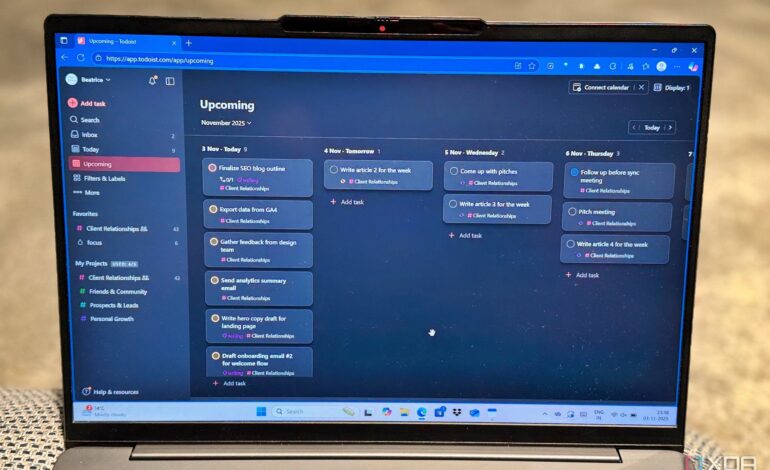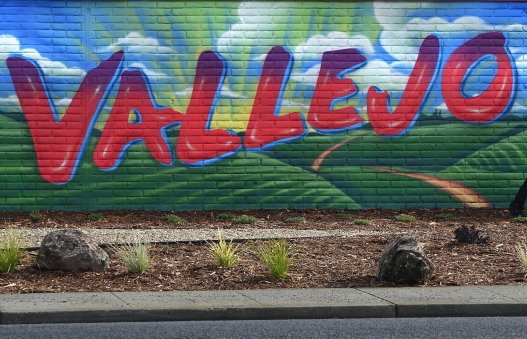Maximize Productivity: 5 Todoist Hacks to Enhance Free Features

Many productivity apps restrict their most valuable features to paid subscriptions, but Todoist offers effective ways to maximize its free plan. Users can transform this project management tool into a customized productivity system without the need for an upgrade. Here are five strategies that enhance the free version of Todoist, making it feel more like a premium service.
Nested Projects for Streamlined Organization
The free version of Todoist allows users to maintain up to five active projects. While this may seem limiting, the platform’s ability to nest tasks within these projects opens up a world of possibilities. Instead of broadly categorizing tasks under labels like “Work” or “Personal,” individuals can create detailed activity hubs.
For instance, within a project titled “Client Relationships,” one can list each client as a parent task and nest specific deliverables, meeting notes, and follow-ups beneath their names. This structure allows users to avoid overwhelming task lists and instead focus on organized sections that expand or collapse based on immediate needs.
This method is equally effective for personal development. A project named “Personal Growth” can categorize reading materials, online courses, and skills being developed, with each book or course represented as a primary task and further broken down into manageable chapters or modules.
Visual Task Management with Priority Levels
Todoist’s free plan features four priority levels, identified as P1 through P4. While premium users have the advantage of custom labels, free users can creatively utilize these priority levels to establish a visual system for organizing tasks.
Rather than using these priorities solely for urgency, transforming them into categories can enhance productivity. For example, P1 (red) could signify high-focus tasks, such as writing projects or complex client deliverables, while P2 (orange) might indicate collaborative tasks that rely on others’ input. P3 (blue) could denote routine maintenance tasks, and P4 can remain as the default for miscellaneous items.
This approach enables users to glance at their “Today” view and quickly gauge the energy required for each task, allowing for better batching of similar work. By prioritizing intentionally, high-impact items naturally ascend to the top of each project, facilitating a more focused workflow.
Streamlined Task Entry through Natural Language Processing
Todoist’s natural language processing feature is a standout aspect that remains available in the free plan. Users can input tasks like “Submit proposal every Monday at 9 am starting December 2” and the app will instantly parse the task name, recurrence pattern, and timing.
This significant time-saver eliminates the need for multiple clicks traditionally required for task entry. Users can quickly capture tasks as they arise, especially during meetings or brainstorming sessions. The ability to handle relative dates such as “tomorrow” or “next Friday” further simplifies task management, allowing for more fluidity in capturing ideas and deadlines.
Custom Views with Filters
While premium users benefit from sections within projects, free users can achieve similar organizational capabilities through filters. Filters allow for the creation of custom task views based on criteria such as priority, due dates, or keywords.
For example, a filter named “@focus” can display all P1 tasks due today or overdue across various projects, providing a concise view of crucial work. Another filter, “@waiting,” can track tasks blocked by others, while a “@quick” filter can surface tasks with a due date of today that are tagged P4, ideal for quick completion during low-energy moments.
Each filter essentially becomes a unique lens for viewing tasks, enabling users to adapt their workflow according to changing priorities without being constrained by premium features.
Personal Tagging with Free Labels
Todoist’s free plan includes up to 500 personal labels, which can be utilized effectively for context-based task management. Users can create labels that represent actual work contexts, such as @home, @office, or @errands, rather than arbitrary categories.
When faced with limited time at home, for example, a user can filter tasks by @home and @writing to see relevant tasks that can be accomplished. This context-based approach aligns with how individuals naturally navigate their daily schedules, making task management more intuitive and efficient.
Productivity Through Constraints
After years of using Todoist’s free tier, many users find that the five-project limitation fosters more intentionality in task organization. This constraint encourages careful consideration of what deserves project-level focus versus what can be nested within existing frameworks.
While premium features offer additional flexibility, the limitations of the free plan often lead to a simplified and effective productivity system that can be maintained over time. Embracing these constraints allows users to develop a workflow that truly meets their needs without the distraction of unnecessary complexity.
By utilizing these five strategies, users can elevate their Todoist experience, transforming a basic task list into a powerful productivity tool. The free plan’s features, when maximized, offer an efficient way to manage both personal and professional projects effectively.





